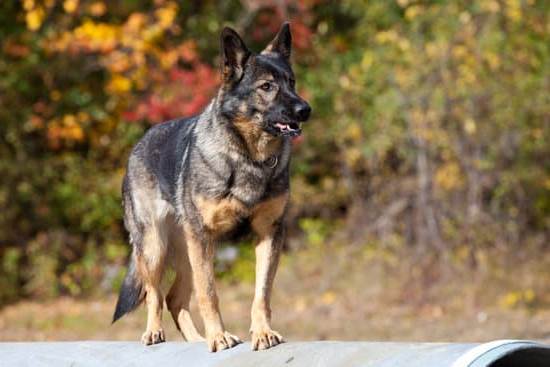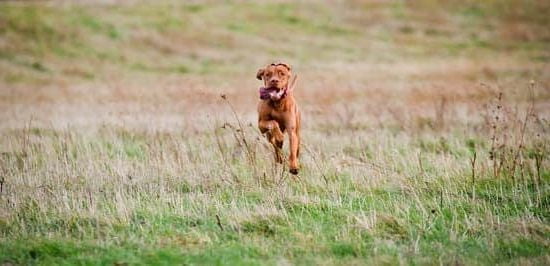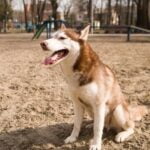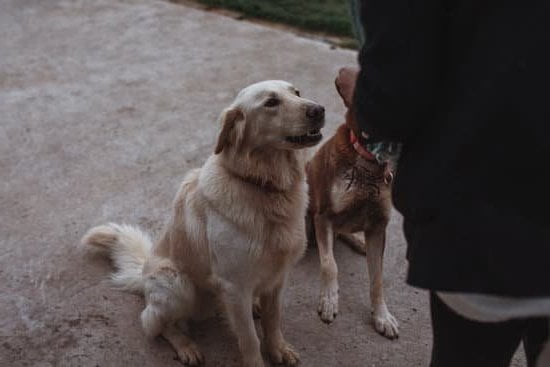Is your furry friend constantly jumping up on you and your guests? If so, it’s time to address this behavior and learn how to train your dog from jumping up. Understanding why dogs exhibit this behavior is the first step in effectively addressing it. From there, you can establish basic obedience training for your pup and use positive reinforcement techniques to discourage the jumping behavior.
Dogs typically jump up on people as a form of greeting or to seek attention. While this may seem harmless, allowing this behavior can have negative impacts, such as causing discomfort or even injury to those being jumped on. Moreover, if not corrected, jumping can become a habit that is challenging to break as your dog grows older.
To address this issue, it’s important to establish basic obedience training for your dog. Teaching commands such as “sit” and “stay” can help curb their urge to jump and provide an alternative way for them to greet people. By using positive reinforcement techniques, you can encourage good behavior while discouraging jumping.
Consistency in training and setting boundaries is crucial in addressing jumping behavior. It’s also important to redirect your dog’s energy and attention towards more appropriate activities, as well as teaching them alternative behaviors that are acceptable when greeting people. However, if despite all efforts the jumping behavior persists, seeking professional help from a certified dog trainer or animal behaviorist may be necessary.
The Negative Impact of Allowing Jumping Behavior
Allowing your dog to jump up on people may seem harmless at first, but it can have negative effects on both your dog and the people around them. Understanding the impact of this behavior is crucial in addressing and correcting it. Here are some reasons why allowing jumping behavior can be harmful:
- Risk of injury: A jumping dog can accidentally scratch or knock over a person, especially children or elderly individuals who may not have the strength or stability to withstand the impact.
- Reinforcement of dominant behavior: Allowing a dog to jump up on people can reinforce dominant behavior and encourage other unwanted behaviors such as nipping or barking.
- Unpleasant interactions: Not everyone enjoys being greeted with an enthusiastic jump from a dog. Allowing this behavior can lead to unpleasant interactions with visitors, neighbors, or strangers.
By recognizing the negative impact of allowing jumping behavior, you can take steps to address this issue through training and consistent reinforcement of alternative behaviors.
It’s important to note that while jumping is a natural behavior for dogs, it’s essential to set boundaries and establish obedience training to ensure that your dog understands what is acceptable and unacceptable behavior when interacting with people. This will not only improve your dog’s manners but also create a safer and more enjoyable environment for everyone involved.
Establishing Basic Obedience Training for Your Dog
Start With Sit Command
One of the most essential basic obedience commands for a dog is “sit.” Teaching your dog to sit on command can be a helpful tool in discouraging jumping behavior. Start by using treats to lure your dog into a sitting position and saying the word “sit” as they do so. Once they have mastered this, start using the command without luring them with treats. This will help them learn impulse control and to focus on your commands.
Practice Down Command
Another important obedience command is “down.” This command teaches your dog to lie down on command, which can be particularly useful when they become overexcited and want to jump on people. Use positive reinforcement such as treats and praise when your dog follows the “down” command, and practice it regularly in different environments to ensure their obedience in various situations.
Utilize Stay Command
Teaching your dog the “stay” command can also be valuable in preventing jumping behavior. Once your dog has learned to sit and stay, you can use these commands when guests arrive at your home or when encountering other people during walks. By giving your dog clear instructions and teaching them self-control, you can prevent jumping up on others while promoting good behavior.
By establishing these basic obedience training techniques, you are not only setting a foundation for a well-behaved pet but also providing them with the tools to resist the urge to jump up on people. Consistency is key, so make sure to practice these commands regularly and reward positive behavior.
Using Positive Reinforcement to Discourage Jumping
When it comes to discouraging jumping behavior in dogs, positive reinforcement can be a powerful tool. By rewarding your dog for appropriate behavior and ignoring or redirecting them when they jump, you can effectively discourage this unwanted habit. Here are some tips for using positive reinforcement to discourage jumping:
- Offer treats and praise when your dog greets people calmly without jumping
- Use a clicker or verbal marker to signal the desired behavior
- Ignore your dog when they jump up, turning away or crossing your arms
Consistency is key when using positive reinforcement to discourage jumping. It’s important that all members of the household and visitors follow the same guidelines to ensure that the training is effective.
By utilizing positive reinforcement techniques, you can not only discourage jumping behavior but also strengthen the bond between you and your dog. Remember to be patient and consistent in your training efforts, as it may take time for your dog to unlearn this habit and adopt more appropriate greetings. If you encounter challenges or find that the jumping behavior persists, seeking professional help from a certified dog trainer or behaviorist may be beneficial.
Consistency in Training and Setting Boundaries
Consistency is key when it comes to training your dog to stop jumping up on people. Dogs thrive on routine and clear boundaries, so it’s important to be consistent in how you respond to the jumping behavior every single time. Inconsistency can confuse your dog and make training much more difficult.
Establishing Clear Rules
Setting clear rules for your dog and consistently enforcing them will help prevent jumping up behavior. For example, if you don’t want your dog to jump on the couch, make sure everyone in the household is on board with this rule. Inconsistency from family members can lead to confusion for your dog.
Using Clear Cues
Having a specific cue or command for when you want your dog to greet people calmly can be very helpful. For example, teaching your dog to sit and stay when someone enters the door can help prevent jumping behavior. Consistently using this cue will reinforce the desired behavior over time.
Avoiding Mixed Signals
It’s important not to send mixed signals when training your dog. If you sometimes allow jumping up because it’s cute or endearing, your dog will continue to do so because he doesn’t understand when it’s acceptable and when it’s not. Consistently reinforcing the rule that jumping is not allowed will help prevent confusion for your furry friend.
Redirecting Your Dog’s Energy and Attention
One effective way to address a dog’s jumping behavior is by redirecting their energy and attention towards something more positive and appropriate. Dogs often jump up on people as a way of seeking attention, so by providing them with an alternative outlet for that energy, the jumping behavior can be minimized.
Redirecting your dog’s energy can involve engaging them in physical activities such as playing fetch, going for a walk, or participating in interactive training sessions. By channeling their energy into these activities, you are providing a healthy and constructive way for your dog to release pent-up energy.
Another way to redirect your dog’s attention and discourage jumping is by using toys or treats as distractions. When your dog is inclined to jump, redirect their attention towards a toy or treat by throwing it on the ground or presenting it to them.
This not only shifts their focus away from jumping but also reinforces positive behaviors such as sitting or staying calm. The key is to make the alternative activity more rewarding and appealing than jumping up on people.
Consistency is crucial when it comes to redirecting your dog’s energy and attention. It is important to engage in these redirection techniques consistently over time in order to see lasting results. By doing so, you are effectively teaching your dog what behaviors are acceptable and reinforcing those that are not. Redirecting your dog’s energy and attention requires patience, persistence, and a deep understanding of your pet’s needs and instincts.
| Redirecting Techniques | Description |
|---|---|
| Engaging in physical activities | Involves playing fetch, going for walks, or interactive training sessions. |
| Using toys or treats as distractions | Shifting the focus away from jumping by presenting a toy or treat. |
| Consistency | Requiring patience, persistence, and understanding of your pet’s needs. |
Teaching Alternative Behaviors to Jumping
In order to stop your dog from jumping up on people, it is important to teach them alternative behaviors that are more acceptable. One effective alternative behavior you can teach your dog is the “sit” command. By training your dog to sit on command, you are giving them a clear and positive behavior to engage in when they greet people. This not only prevents them from jumping, but also reinforces good manners and obedience.
Another alternative behavior to jumping is teaching your dog to fetch a toy upon greeting someone. This redirects their energy into a more appropriate action and keeps them occupied, preventing them from jumping up out of excitement. Additionally, by encouraging them to hold a toy in their mouth when greeting people, you are providing an outlet for their energy and attention.
It’s important to be patient and consistent when teaching these alternative behaviors. Reinforce and reward your dog every time they engage in the desired behavior instead of jumping up on someone. Over time, they will learn that sitting or fetching a toy is the preferred way to greet people, leading to a well-behaved and polite pet.
| Alternative Behaviors | Description |
|---|---|
| Sit Command | Teach your dog to sit on command as an alternative behavior when greeting people. |
| Fetch Toy | Encourage your dog to fetch a toy when greeting someone as an alternative way of expressing excitement. |
Seeking Professional Help if Jumping Behavior Persists
In conclusion, while training your dog to stop jumping up may require time and patience, it is a worthwhile endeavor for both you and your pup. By understanding the reasons behind this behavior and its negative impact, you can take proactive steps to address it. Establishing basic obedience training, using positive reinforcement, and being consistent in setting boundaries are all crucial aspects of tackling this issue.
Additionally, redirecting your dog’s energy and attention towards alternative behaviors is essential in discouraging jumping. Whether it’s teaching them to sit or stay, giving them a chew toy, or engaging them in interactive play, finding ways to redirect their focus will help minimize jumping incidents. It’s important to note that seeking professional help from a certified dog trainer or behaviorist may be necessary if jumping behavior persists despite your best efforts.
Remember that every dog is unique and may require different approaches to training. Be patient with your furry friend as they learn new behaviors and always reward good behavior with praise and treats. With dedication and consistency in your training methods, you can help your dog overcome their jumping habit and strengthen the bond between you.
Frequently Asked Questions
How Do You Train a Dog Not to Jump Up?
The key to training a dog not to jump up is consistency and positive reinforcement. When the dog jumps, avoid giving any attention or eye contact and instead, teach them to sit or stay before receiving any attention.
Use treats, praise, and patience to reward the desired behavior of keeping all four paws on the ground. It’s also important to communicate with others who interact with your dog to ensure they are consistent in their approach as well.
Will My Dog Grow Out of Jumping Up?
Whether or not a dog will grow out of jumping up largely depends on the training and reinforcement they receive. With consistent training and positive reinforcement, many dogs can learn to stop jumping up as they mature.
However, if this behavior is consistently rewarded or ignored, it may become ingrained in the dog’s behavior and be more difficult to change as they grow older.
How Do I Train My Dog to Ignore Other Dogs When Walking?
Training a dog to ignore other dogs when walking involves teaching them basic commands like “heel,” “sit,” “stay,” and “leave it” in a variety of environments including around other dogs. Start by gradually introducing controlled interactions with other dogs while reinforcing obedience commands using treats and praise.
Consistent practice will help your dog learn to focus on you rather than getting distracted by other dogs during walks. Additionally, understanding your dog’s triggers for reacting to other dogs can help you address these behaviors effectively.

Welcome to the blog! I am a professional dog trainer and have been working with dogs for many years. In this blog, I will be discussing various topics related to dog training, including tips, tricks, and advice. I hope you find this information helpful and informative. Thanks for reading!





